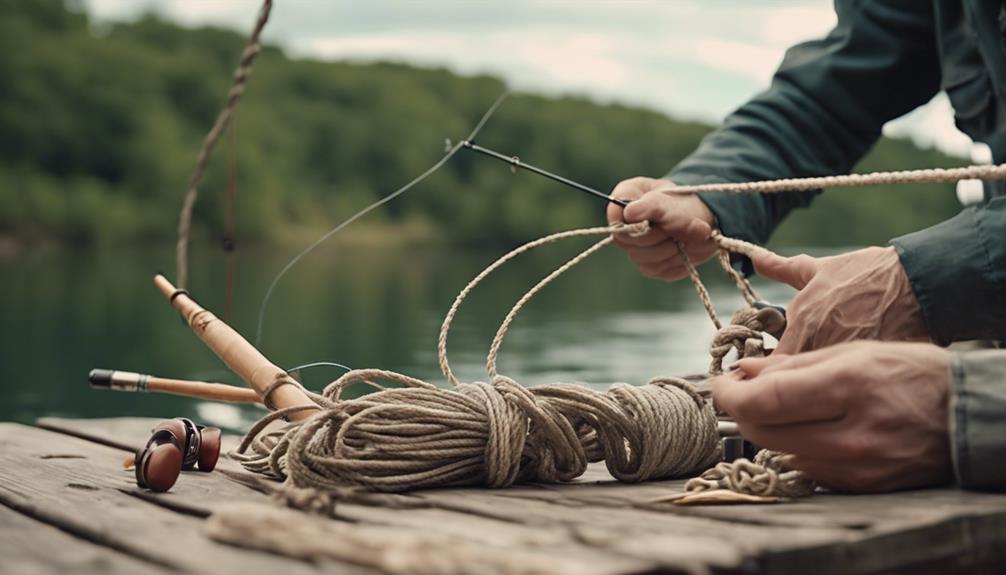Understanding Fly Fishing Tippet: What Is It?
Fly fishing tippet is an essential component of your fly fishing setup. It is the final section of line that connects your fly to the leader, and its role is crucial for a successful catch. Typically made from either nylon or fluorocarbon, the fly fishing tippet is designed to be thin and nearly invisible in the water, allowing the fly to drift naturally, which is key to fooling fish. The tippet’s diameter can vary significantly, affecting strength and visibility, making it vital for anglers to choose the right tippet based on their fishing conditions and target species.
Choosing the Right Fly Fishing Tippet: Factors to Consider
When selecting a fly fishing tippet, several factors come into play. The first consideration is the type of fish you’re targeting. Different species have varying levels of strength and finesse, so the tippet’s strength, typically measured in pounds or kilograms, should match the fish’s size. Additionally, water clarity is crucial; in clear waters, a thinner, more transparent tippet is recommended to avoid spooking fish, while in murkier waters, a stronger, thicker tippet can be used. Lastly, the specific conditions of your fishing environment—such as current speed and structure—also influence the choice of tippet.
The Importance of Tippet Length in Fly Fishing
The length of your fly fishing tippet plays a significant role in your overall fishing success. Generally, a longer tippet will provide a more natural presentation of your fly, especially in calm waters. However, a longer tippet can also be more challenging to cast and may result in tangles. A good rule of thumb is to use a tippet that is at least the length of your rod; this provides enough distance for a smooth cast while maintaining control. Anglers often adjust tippet length based on factors like wind and water conditions, striving for the perfect balance between distance and control.
Common Materials Used for Fly Fishing Tippet
Fly fishing tippet is primarily made from two materials: nylon and fluorocarbon. Nylon tippet is known for its elasticity and strength, making it a popular choice among anglers. It is also more affordable and easier to handle. On the other hand, fluorocarbon tippet is virtually invisible underwater due to its light refractive properties, making it ideal for clear water conditions. It is more rigid than nylon, which can enhance sensitivity but may affect the fly’s presentation. Understanding the pros and cons of each material can help you make informed decisions about which tippet to use for specific fishing scenarios.
How to Properly Tie Your Fly Fishing Tippet
Tying your fly fishing tippet correctly is crucial for ensuring that your fly stays securely attached during casting and retrieval. The most common knot used for connecting tippet to a fly is the Improved Clinch Knot. To tie it, thread the tippet through the eye of the hook, wrap the end around the standing line several times, and then pass it through the loop before tightening. Remember to moisten the knot before pulling it tight to reduce friction and prevent damage to the line. Mastering the art of knot tying is essential for any angler looking to maximize their success on the water.
Managing Tippet Spool: Storage and Maintenance Tips
Proper storage and maintenance of your fly fishing tippet can enhance its longevity and performance. After each fishing trip, it’s essential to inspect your tippet for any signs of wear or damage. Store your tippet spools in a cool, dry place away from direct sunlight to prevent degradation of the material. Many anglers choose to use tippet holders or organizers, which can help keep different sizes and materials tidy and accessible. By taking good care of your tippet spools, you can ensure that they remain in optimal condition for your next fishing adventure.
Signs It’s Time to Replace Your Fly Fishing Tippet
Knowing when to replace your fly fishing tippet is crucial for maintaining effective fishing practices. Over time, tippet can become worn, frayed, or weakened due to exposure to elements such as UV light, saltwater, or abrasive surfaces. If you notice any visible damage or if your tippet has been used extensively and is showing signs of wear, it’s time for a replacement. Additionally, if you find that your flies are not behaving as expected in the water or if you experience more break-offs than usual, it might be a sign that your tippet isn’t performing as it should.
Conclusion: Mastering Fly Fishing Tippet for Success
In the world of fly fishing, understanding and mastering the use of fly fishing tippet is essential for achieving success on the water. From selecting the right material and length to learning how to tie knots and maintain your tippet, every detail plays an integral role in your fishing experience. By paying attention to these aspects and adapting your approach based on conditions and target species, you can significantly enhance your chances of landing that prized catch. So gear up, choose your tippet wisely, and enjoy the art of fly fishing to its fullest!
With this comprehensive guide, you have the tools and knowledge needed to make informed decisions about your fly fishing tippet. Remember that practice and patience go hand in hand with improved skills, so get out there and enjoy the thrill of fly fishing!
